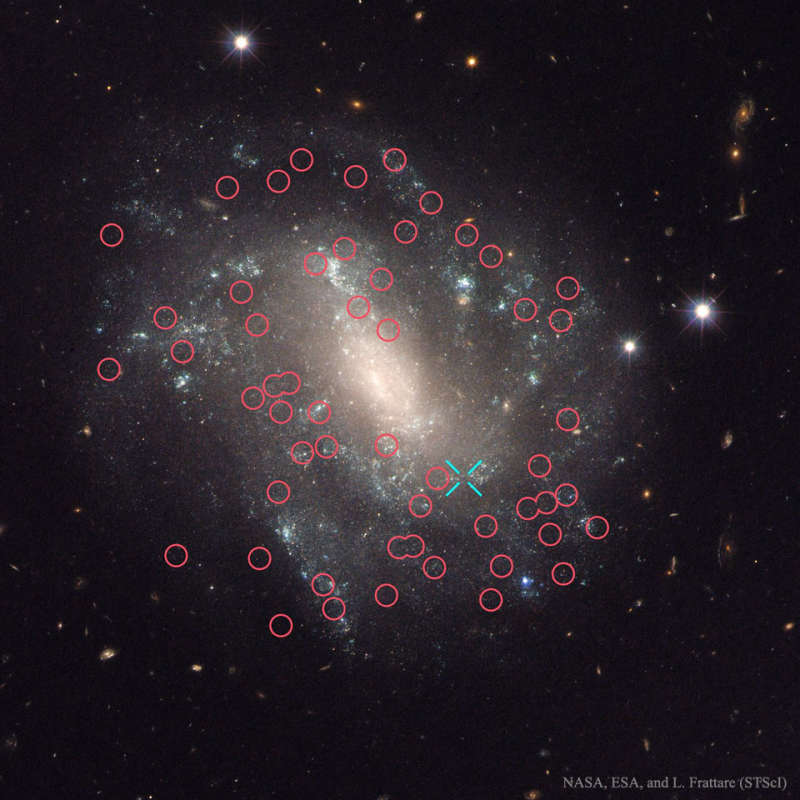Explanation: What can this galaxy tell us about the expansion rate of the universe? Perhaps a lot because UGC 9391, featured, not only contains Cepheid variable stars (red circles) but also a recent Type Ia supernova (blue X). Both types of objects have standard brightnesses, with Cepheids typically being seen relatively nearby, while supernovas are seen much further away. Therefore, this spiral is important because it allows a calibration between the near and distant parts of our universe. Unexpectedly, a recent analysis of new Hubble data from UGC 9391 and several similar galaxies has bolstered previous indications that Cepheids and supernovas are expanding with the universe slightly faster than expected from expansion measurements of the early universe. Given the multiple successes of early universe concordance cosmology, astrophysicists are now vigorously speculating about possible reasons for this discrepancy. Candidate explanations range from the sensational, such as the inclusion of unusual cosmological components types such as phantom energy and dark radiation, to the mundane, including statistical flukes and underestimated sources of systematic errors. Numerous future observations are being planned to help resolve the conundrum.
Astrophysicists:
Browse 1,250+ codes in the Astrophysics Source Code Library
1999 2000 2001 2002 2003 2004 2005 2006 2007 2008 2009 2010 2011 2012 2013 2014 2015 2016 2017 2018 2019 2020 2021 2022 2023 2024 2025 |
Yanvar' Fevral' Mart Aprel' Mai Iyun' Iyul' Avgust Sentyabr' Oktyabr' Noyabr' Dekabr' |
NASA Web Site Statements, Warnings, and Disclaimers
NASA Official: Jay Norris. Specific rights apply.
A service of: LHEA at NASA / GSFC
& Michigan Tech. U.
|
Publikacii s klyuchevymi slovami:
supernova - cepheid - spiral galaxy - Sverhnovye - spiral'naya galaktika - Cefeidy
Publikacii so slovami: supernova - cepheid - spiral galaxy - Sverhnovye - spiral'naya galaktika - Cefeidy | |
Sm. takzhe:
Vse publikacii na tu zhe temu >> | |
